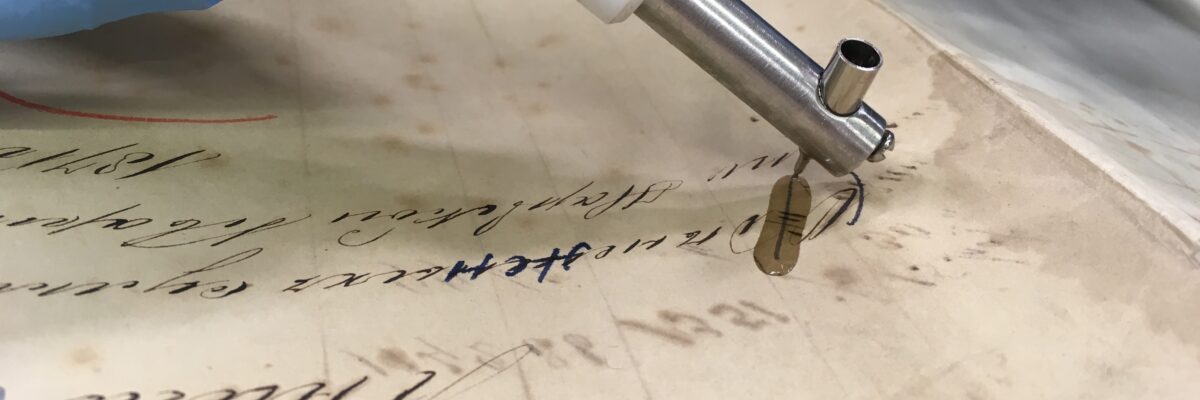
CAPC Emerging Conservator Grant Awarded
Tanya Richards Daigle reports her attendance at the 2nd Icon Book & Paper Group Conference, “Unexpected Fame: Conservation Approaches to the Preparatory Object,” October 1-3, 2018 Oxford, United Kingdom
I would like to thank the Canadian Association of Professional Conservators for their support helping me to attend the 2nd Icon Book & Paper Group Conference, “Unexpected Fame: Conservation Approaches to the Preparatory Object,” held October 1-3, 2018 in Oxford, United Kingdom.
The conference offered an invaluable opportunity to be introduced to new approaches in paper conservation through the presentation of a diverse range of projects that looked at items created for reasons other than display and not necessarily designed by their creators with longevity in mind.
Preparatory objects are of particular interest to me as they often hold so much information about the artist’s working process and there can be many different ideas regarding the focus of the conservation and what is most important to preserve.
A presentation given by Robert Minte, of the Bodleian, discussed how the Mary Shelley Frankenstein manuscripts were treated somewhat differently because they are in such high demand as a research item.
Abigail Merritt discussed solutions to preserving delicate contextual evidence of extensive notations and additions (on things like sticky notes) in the James Ivory collection of materials used to prepare for Merchant Ivory Production films from 1963 to 2018 at the Morgan Library & Museum.
Shona Hunter, from the National Library of Scotland, presented on the conservation of a giant popup book created as a portable stage set for The Cheviot, the stag and the Black, Black Oil, in 1973, by Scottish artist John Byrne. The political play, about Scotland’s socioeconomic history, was performed in community centres and town halls. The giant book was made out of cardboard and not intended to last. It toured the country in the early 1970’s strapped to the roof of a van. Because of the fragility of the book and concerns over long term display it was scanned and a 3D model was created so that it is more accessible and all pages can be viewed although only one will be on display at a time.
Sue Hourigan presented on the preservation of a stained glass window design by John Piper. Piper created the design in 1983 using five panels of paper stuck together on the verso with painted black masking tape and supported from the verso with transparent Fablon. The cartoon measured 3 by 4 metres and was being conserved in order to be hung from the ceiling of Dorchester Abbey in Oxford at the centrepiece for a recent exhibition of Piper’s work. The focus, in this case, was on conserving the work so that it could be displayed and some of the materials had to be replaced in order to make this feasible.
On the first evening of the conference, a reception was held at Pitt Rivers Museum. This museum holds many ethnographic items from around the world and offered the opportunity to meet other paper conservators as well as enjoy the museum’s rich collection.
On the last day of the conference there was a choice of tours. I chose to visit the Ashmolean. This offered an opportunity to learn more about the work that had been presented at the conference regarding the non-invasive investigations of 40 Raphael drawings in their collection.
This conference was an exciting and much appreciated opportunity.
Tanya Richards Daigle
